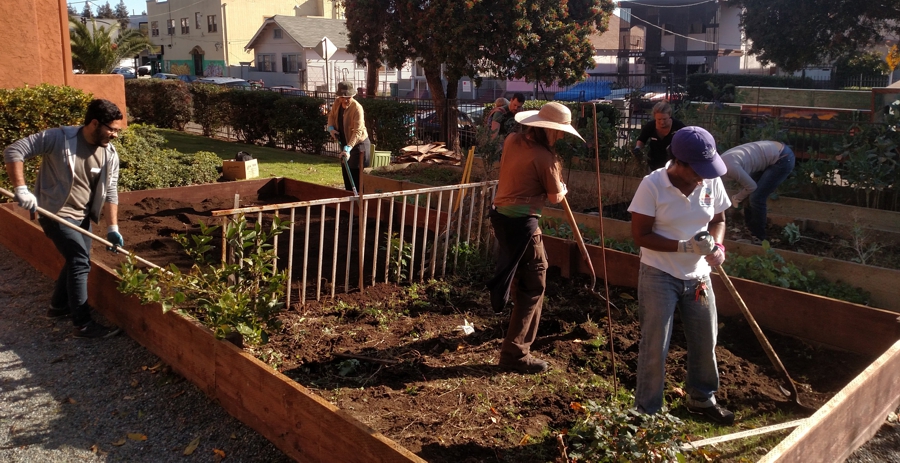The Community Garden vs. Food Insecurity
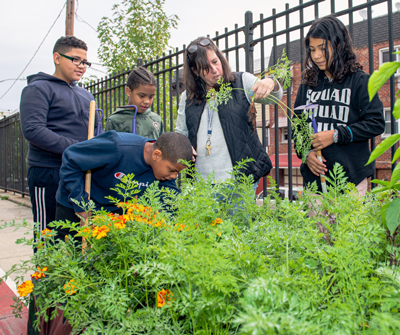
Most of us can take a short walk or drive to our local market for fresh food, or even walk into our garden to harvest a ripe tomato for salsa or some greens for a salad. But many Americans live in so-called food deserts, not only lacking the space or means to grow their own produce, but possibly living miles from the nearest grocery store, instead relying on gas stations or liquor stores for food access. And without healthy food options, these communities—which are often situated in underserved neighborhoods—commonly have much higher rates of cardiovascular disease, diabetes and cancer than more affluent neighborhoods. Fortunately, more organizations and cities are addressing this issue with community gardens and urban farms.
Founded in 2001, City Slicker Farms (CSF) in Oakland, Calif., has a mission "to increase wellness and build community through equitable access to healthy food, thriving gardens and urban green space."
"Our community's health and well-being is suffering because of an absence of nutritious food, coupled with pollution, poverty and a lack of connection with nature in an industrial landscape, the outcome of racist policies and systems," said Aliya Benudiz, marketing and communications coordinator at CSF. She pointed out that due to "grocery store redlining," West Oakland has more liquor stores per corner than most places. "Currently there's only one fresh food grocery store for over 45,000 people. But even then, a lot of folks can't afford fresh produce. Overall, this leads to systemic health problems that disproportionately affect communities of color.
"Urban farming and teaching people to grow healthy produce is effectively a public health intervention," Benudiz continued. "Not only that, but it offers a space to reconnect with nature and enjoy green space, which has been shown to positively impact mental health and well-being. Our current food systems are failing our communities, so it's now up to the people to take matters into their own hands."
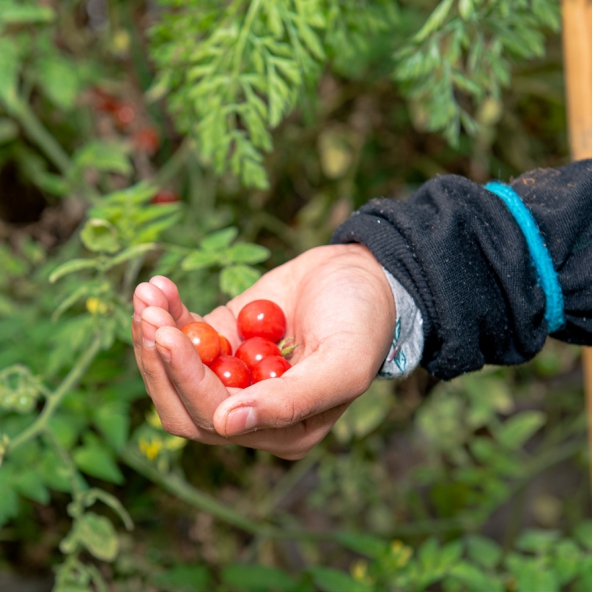
CSF's founder Willow Rosenthal started out building gardens on unused plots of land and in neighbors' back yards, which eventually became so productive they started donating the extra produce. This sparked a backyard garden revolution in West Oakland, but Benudiz pointed out that the cost-of-entry to gardening isn't cheap, considering soil, raised bed supplies, tools, plant starts and seeds. That's where CSF comes in, to date building more than 400 gardens through their Backyard Gardens Program. "We cater to low-income families, community establishments like elderly homes, affordable housing units, schools and churches, and offer everything they need to start a productive garden for free."
And while building a garden is a first step, Benudiz said the real impact comes from helping gardeners sustain it long-term. "We're dedicated to the success of our gardeners, and that means continually offering support, supplies and plants to keep them going." She explained that participants can sign up for Mentor Visits by a backyard garden manager. "They come with free compost to help amend the soil, new seasonally appropriate starters and any tools the gardener requests." They also troubleshoot problems and teach best practices for addressing things like pest management and soil health.
Established in 2017, Urban Growers Collective (UGC) is a black- and women-led nonprofit organization in Chicago aiming to "address the inequities and structural racism that exist in the food system and in communities of color." Laurell Sims, co-founder and CEO of UGC, believes that health outcomes shouldn't be dependent on zip codes. "Because of divestment in Black and Brown communities, the health disparity gap has widened. The legacy of racial and economic segregation, lack of grocery stores and green space, underfunded education and the lack of living-wage jobs conspires to harm. Social determinants of health include amenities like parks, grocery stores, decent schools, transportation, decent housing and living wage jobs. We call it food apartheid because these are laws and policies that inflict harm and should be rectified."
Community gardens are one initiative of UGC, and Sims said that last year they had more than 50 families participating at their two community garden locations. Plots are $25, though LINK recipients and those demonstrating financial need receive a free plot. "To help gardeners, we provide free and discounted workshops, facilitate lunch-and-learns, and have farming staff on hand to help offer guidance to growers. For those ready to take their garden to the next level, we offer an annual Growers Apprenticeship that teaches advanced growing, marketing and business development."
Simms pointed out that the pandemic demonstrated how vulnerable our food system and supply chain are to disruption. "With that in mind, it's incredibly important to build a local food system, and community gardens are part of developing the local food economy. Giving people access to land that's secure and safe empowers them to provide wholesome, culturally appropriate foods for their families. It's just good policy and should be encouraged by local governments."
UGC also operates eight urban farms on 11 acres, partnering with the Chicago Park District and the Chicago Housing Authority to utilize underused green space in their land portfolios. "As an exchange, we can utilize their land while providing engagement and services to the community," Simms said. Each farm utilizes organic growing methods, and in addition to fruits and vegetables, the farms produce culinary and medicinal herbs, edible flowers and ornamental plants for neighborhood beautification. They also raise goats, chickens and honeybees.
"At our urban farms, we try to layer food production with community engagement," said Simms. "(We) engage the community through educational workshops, job training for our 180-plus teen employees, farmstand produce distribution, tours, volunteer opportunities and special events. We try to make the community-based farm a hub of connection, while also making the land as productive as possible." Workshops and trainings have covered topics including urban agriculture, agribusiness development, mushroom growing, herbal medicine and beekeeping.
During the growing season, UGC hosts weekly stands at two of their farms and participates in other area farmers markets. They also offer a seasonal Collective Supported Agriculture (CSA) subscription, with members receiving weekly shares of vegetables, fruits and herbs. And then there's the bus that's been converted into the Fresh Moves Mobile Market.
"The 'produce aisle on wheels' works toward closing the food access gap by bringing produce to schools, community centers, churches and health clinics—places that folks already frequent—to make good food accessible in Black and Brown neighborhoods that have been historically divested," explained Simms.
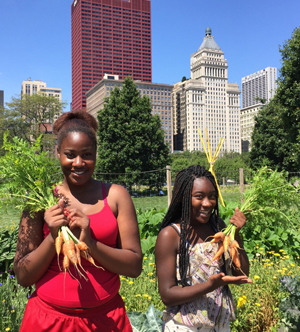
Customers board the bus and shop for produce and staples, which are affordably priced while also providing a fair return for farmers and suppliers. During the pandemic, everyone who boarded the bus was given $10 off their produce and LINK dollars were matched up to $25. UGC also provided more than 5,000 produce boxes and nearly 14,000 hot meals made with farm produce to community partner organizations to help alleviate hunger.
City Slicker Farms turned a vacant brownfield site into a functioning farm and educational site, the 1.4-acre West Oakland Farm Park. There's an outdoor classroom, nutrition demo zone, an orchard, a playground with edible plantings, a chicken coop and apiary. The land for the Farm Park was acquired from a proposition that CSF applied for, according to Benudiz, so the nonprofit owns the land. The Alameda County Department of Public Health supplied a grant that helps with staffing costs, but otherwise they rely mostly on individual donations, which are critical to maintaining their mission.
Farm Park also features 32 community garden plots, tended by community members who've been accepted into the program and provided with seeds and starters, according to Benudiz. "The other half of the Farm Park is dedicated to our food-producing farm, maintained by our farm manager. All the produce we grow there is harvested for our free Town Fridge and pantry, which is located directly outside the Farm Park. It's open to the community 24/7 and is used heavily by houseless folks and low-income families from the area."
Benudiz said they practice sustainable and regenerative agriculture and implement climate-resilient infrastructure, understanding that climate change is drastically affecting food systems. "Some of our key practices include rainwater harvesting systems; large scale composting; chicken rearing to help break down garden waste and till the soil; using all-organic materials and never using pesticides or synthetic fertilizers; appropriate crop rotation to maintain soil health; sheet mulching for water retention; water-wise drip irrigation; creating intentional pollinator habitat; and using recycled and reused building materials, to name a few."
CSF also offers workshops and training programs, and Benudiz said their cooking classes—focused around using homegrown ingredients—are very popular. She also described working with a local high school to offer three internships to youth who want to study urban agriculture. "We work with them once a week to show them valuable gardening skills and have discussions about food justice. We also host field trips and tours with schools and other groups to teach them about our work."
In 1970, the Council on the Environment of New York City was born, which evolved into today's GrowNYC, with a mission to "improve New York City's quality of life through environmental programs that transform communities."
One program area involves food access and agriculture, with a goal of ensuring that all New Yorkers have access to fresh, healthy food through a network of Greenmarket farmers markets, farm stands, Youthmarkets and Fresh Food Box pickup sites. GrowNYC has also built more than 150 gardens, including community gardens in public housing developments, churches, daycares and senior centers.
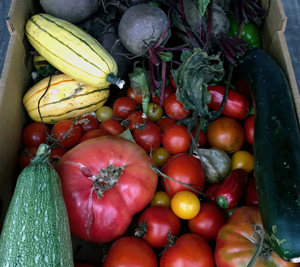
"In urban areas, we don't always have the opportunity to connect with the natural world in a meaningful way. Gardens grow so much more than plants—they grow community, environmental stewards, a connection to nature, healthy eating habits and empathy," said Kristin Fields, director of GrowNYC School Gardens, the citywide school gardens initiative in partnership with GrowNYC, the Departments of Education's Office of School Food and GreenThumb, the community gardens branch of NYC Parks.
For the past 10 years, the School Gardens program has offered mini-grants where schools could apply for $500 to $2,000 in funding to start or sustain learning gardens, according to Fields. This year, the Department of Education rolled out a formalized Outdoor Learning initiative and invested more than $1.5 million in funding for schools to start or expand their learning spaces, which helps to deliver workshops, resources, grants and technical assistance to schools. "GreenThumb has contributed essential garden materials like tools, soil, lumber, mulch and more. We're lucky to have fantastic partners," said Fields.
"Assembling a garden-building team is a great first step in developing a garden committee who will sustainably steward the space for years," continued Fields, who said they provide guidance with garden design and source materials. And since building a garden on school grounds isn't always possible, they often connect schools to local community gardens to share spaces. "One or two raised beds in a shared community garden is a terrific way to introduce students to gardening without taking on the full responsibility of stewarding a space, and a great way to introduce school families to gardening."
So do the students get to bring produce home, or share with the community? "Yes! During the first few months of the pandemic, when food banks and pantries were experiencing shortages, our school gardeners jumped fences when school was closed in order to access their gardens and grow for their communities," said Fields, who explained that some students had established community fridges or pantries beforehand, or were donating to local Community Based Organizations. Others sent produce home with families. "Since the pandemic, we've been seeing more schools interested in growing food to address food insecurity in their communities."
Who tends the gardens during summer vacation? This falls to students who wish to carry on, or to local families or the school itself if they remain open in summer. Otherwise, growing things like sweet potatoes is encouraged, since they need little oversight and take 90 days to mature, so a June planting can yield a fall harvest. "One school harvested 90 pounds of sweet potatoes from their rooftop garden after summer break, which is a great way to start the new school year," said Fields.
School Gardens also provides a monthly newsletter, an online portal of school gardening resources and instructional videos and 40-plus educational workshops each year open to teachers, administrators, parents and students. During the pandemic, they went virtual. "One of our favorites was the 'Grow a Garden From Food Scraps' workshop, which encouraged participants to regrow fruits and veggies from seeds, cuttings, dried beans—really anything they might have had in their fridge or pantry," said Fields.
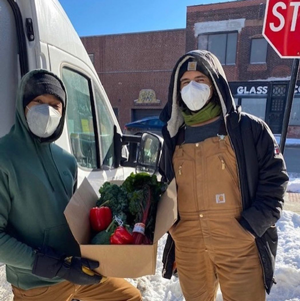
There's also an urban farm on Governor's Island, open to the public on weekends and offering field trips to NYC schools and summer camps. "Our Teaching Garden on Governors Island spans an acre, and it's home to fruit trees, raised beds, an aquaponics lab, solar oven and more, lovingly built and tended by GrowNYC," said Fields. "We welcome 21,000 students, active older adults and families each year to learn about food and farming."
Community garden programs don't necessarily need to be in urban settings or impoverished areas to help alleviate food access issues. In St. Charles, Ill., a middle-class suburb of Chicago, the James O. Breen Community Park hosts 209 garden plots available to rent from the park district. The plots are 20 by 30 feet—a lot of space for one family. So a program was initiated where gardeners can leave excess produce onsite in wooden bins built by Eagles Scout candidates, and the park district delivers it to the local Salvation Army food pantry.
"To coincide with the days they're open to the public, we pick up and drop off produce on Mondays and Thursdays," said Pam Otto, outreach ambassador for the St. Charles Park District. "This also works well in terms of keeping the produce fresh; many gardeners visit their plots on the weekend, and that Monday pickup means it's not sitting out for days."
The program has been popular, especially as more families found themselves struggling during the pandemic. Otto described how a Salvation Army manager worked with clients to provide recipes and serving ideas for the donated produce. "There are times when I'd be met by clients in the parking lot so they could get the fresh ingredients they needed for the recipes." Additionally, any vacant plots are made available for individuals or groups interested in planting the spaces and donating the produce.
Both Simms and Benudiz agreed that they're dependent on community volunteers to accomplish their missions, with Simms telling us they had more than 600 people volunteering at Urban Growers Collective farms in 2021. "Once a month we host a large workday called First Saturdays at City Slicker Farms, where we host a craft fair, new volunteer orientation, and a workday where we tackle some large-scale projects on the farm," said Benudiz. "It helps us so much, and we're so grateful for our amazing community of volunteers."
For communities looking to initiate community garden programs, Simms advises involving the community in the planning from day one. "Provide transportation, meals, babysitting and have a diverse range of dates and times so that folks working multiple jobs have the opportunity to be heard."
Benudiz suggests starting small, seeking out similar organizations for support, applying for funding opportunities and building a following on social media to gain support. "Many urban farming nonprofits are happy to share advice, books, supply resources, etc. We all have the same goal and vision and want to see the movement grow!" RM



